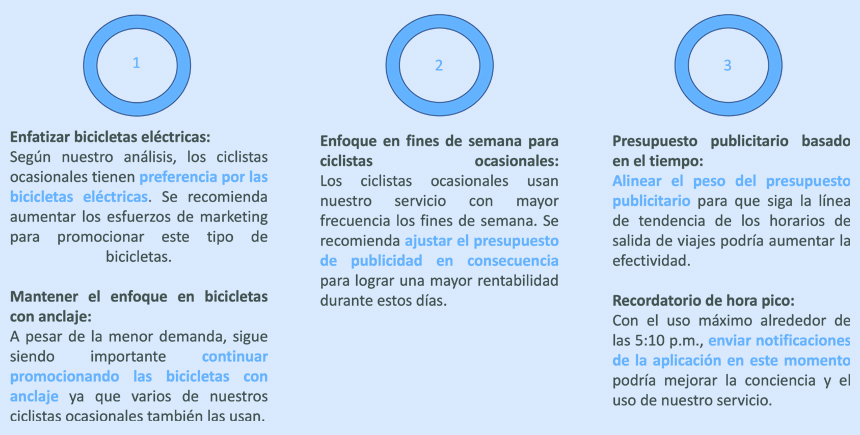
Project URL:
https://github.com/abraham-cedeno/Analisis-de-audiencia-caso-Cyclistic.git
Project URL in R:
Cyclistics-Analysis-notebook-in-R.html
Tools used:
SQL, RStudio, Microsoft Excel, Power Query, Tableau
Section 1: Project Introduction
Problem Description
Cyclistic, a bike-sharing company in Chicago, aims to maximize the number of annual members to ensure its future growth. The marketing team needs to understand the differences between casual cyclists and annual members, and how digital media can affect their strategy.
The main task of this project is to analyze the historical bike trip data of different types of Cyclistic customers, particularly over the past 12 months, to understand how they use the bikes differently.
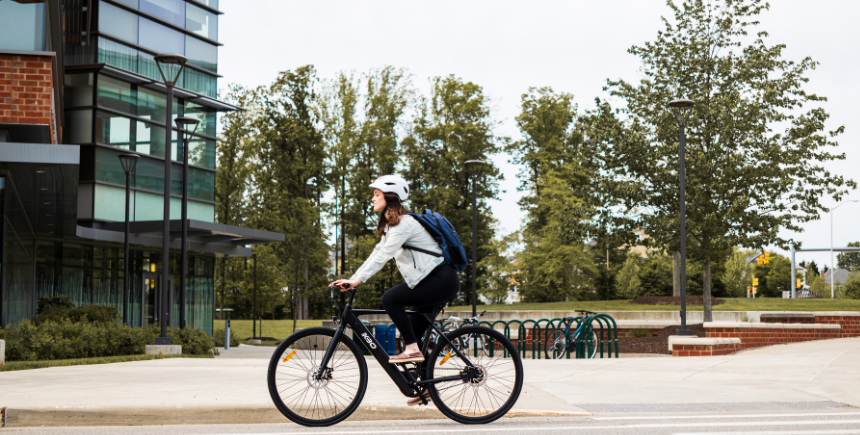
Business Objective
"Provide valuable insights to the marketing team so they can determine the most effective digital marketing strategies, enabling them to connect with Cyclistic's audience and influence casual cyclists to choose an annual membership."

Section 2: Data Description
The data provided for this project includes more than 6 million bike trip records from Cyclistic, with detailed information about each trip, including the trip identification, the type of vehicle used, the time and date of trip start and end, the start and end stations, and the geographical coordinates of the starting and ending points.
| Column | Type of data | Sub type of data | Ranges and categories |
|---|---|---|---|
| 1. Trip ID | Categorical | Nominal | ID with numbers and letters |
| 2. Vehicle type | Categorical | Nominal | classic bike, electric bike, docked bike |
| 3. Start time | Numerical | Continuous | 0:00 a 24:00 |
| 4. Start date | Numerical | Discrete | 11/1/2021 a 10/31/2022 |
| 5. End time | Numerical | Continuous | 0:00 a 24:00 |
| 6. End date | Numerical | Discrete | 11/1/2021 a 10/31/2022 |
| 7. Start station ID | Categorical | Nominal | ID with numbers and letters |
| 8. Start Station Names | Categorical | Nominal | Start Station Names |
| 9. End Station ID | Categorical | Nominal | ID with numbers and letters |
| 10. End Station Names | Categorical | Nominal | End Station Names |
| 11. Start Latitude | Numerical | Continuous | -90º a 90º |
| 12. Start Longitude | Numerical | Continuous | -180º a 180º |
| 13. End Latitude | Numerical | Continuous | -90º a 90º |
| 14. End Longitude | Numerical | Continuous | -180º a 180º |
Sección 3: Findings
What was the percentage distribution of bike preferences?

Observations
- Member preferences equal: Member travelers do not have a significant preference for a type of bike since their distribution was almost 50%/50%.
- Preference for electric bikes: Casual travelers have a higher preference for electric bikes than for classic bikes.
- Some casual travelers use docked bikes: Although none of the member travelers used docked bikes, some casual travelers did use them.
How is the service usage distributed over the week?
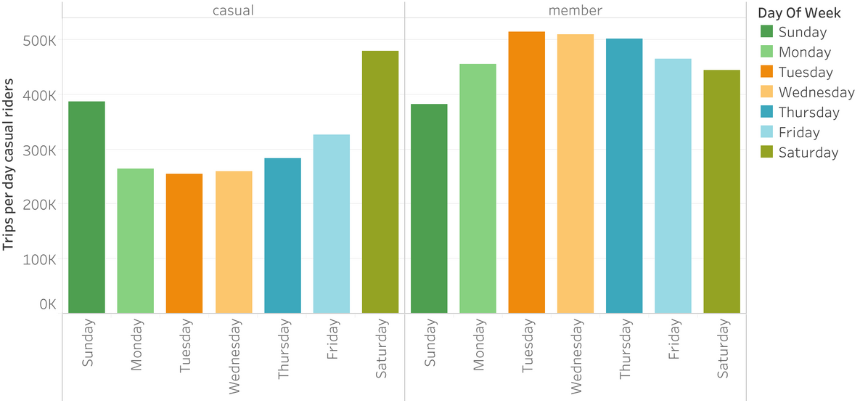
Observations
- Casual travelers travel more on weekends: It is observed that the volume of casual trips decreases on weekdays and increases on weekends.
- Member travelers travel more on weekdays: The opposite pattern is observed with member travelers who use the service more frequently during the week.
How is the service usage distributed over a day?

Observations
- Same peak hour: The peak hour for the start of casual and member user trips is around 5:10 PM.
- Variable behavior patterns during the day: Member travelers have an initial peak around 8:30 AM, then a decrease until 4:00 PM when it rises again. In contrast, casual travelers have a continuous increase in departures from the morning until the peak hour.
What is the average trip duration?
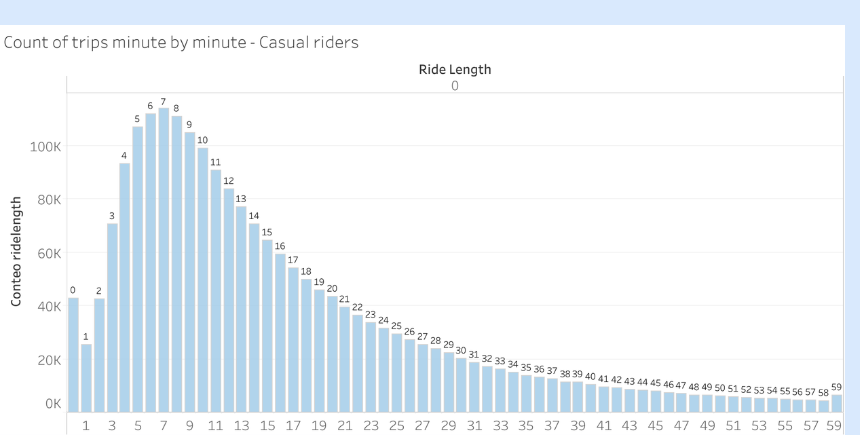

Observations
- Longer duration for casual trips: The average duration of casual trips (22:52 mins) is longer than that of member trips (12:27 mins).
- Distinct average duration peak: It is observed that the highest volume of casual trips occurs at 7 minutes, while for member trips, the highest volume occurs at 4 minutes.
- High dispersion: A higher dispersion is visualized in the histogram of casual trips, which confirms why the average is so high.
What is the preferred station for starting trips?
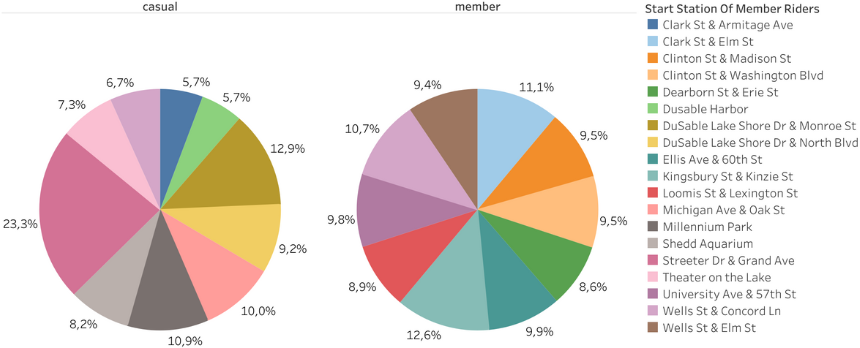
Observations
- Significant preference in casual travelers: A significant preference is perceived in casual travelers, almost 25% of trips started at the "Streeter Dr & Grand Ave" station.
- No significant preference found in member travelers: It is observed that in the pie chart for members, trips are distributed almost equitably for all stations.
- Similar pattern in trip ending: When graphing for trip ending, the same pattern was found for both types of travelers.
How are the trip start points distributed geographically?
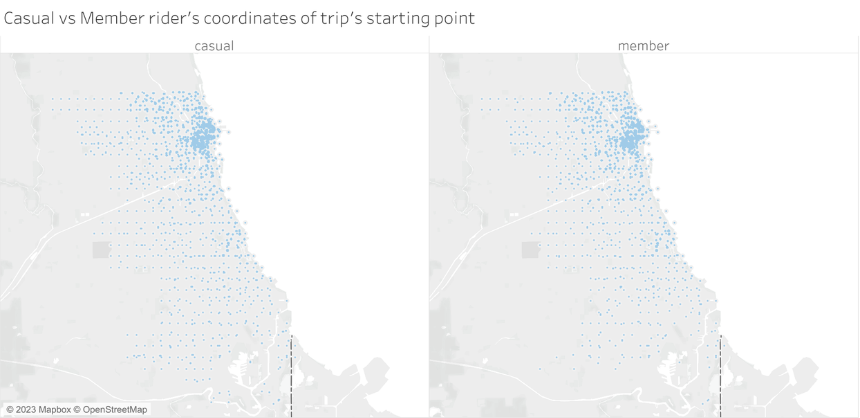
Observations
- Similarity in geographic behavior: A significant difference in the behavior of both types of travelers is not perceived.
- High usage of services in a specific radius: It can be perceived that there is a radius in which a lot more trips are initiated than in other geographic locations.
- Similar pattern in trip completion: When graphing for trip completion, the same pattern was found for both types of travelers.
Section 4: Recommendations
